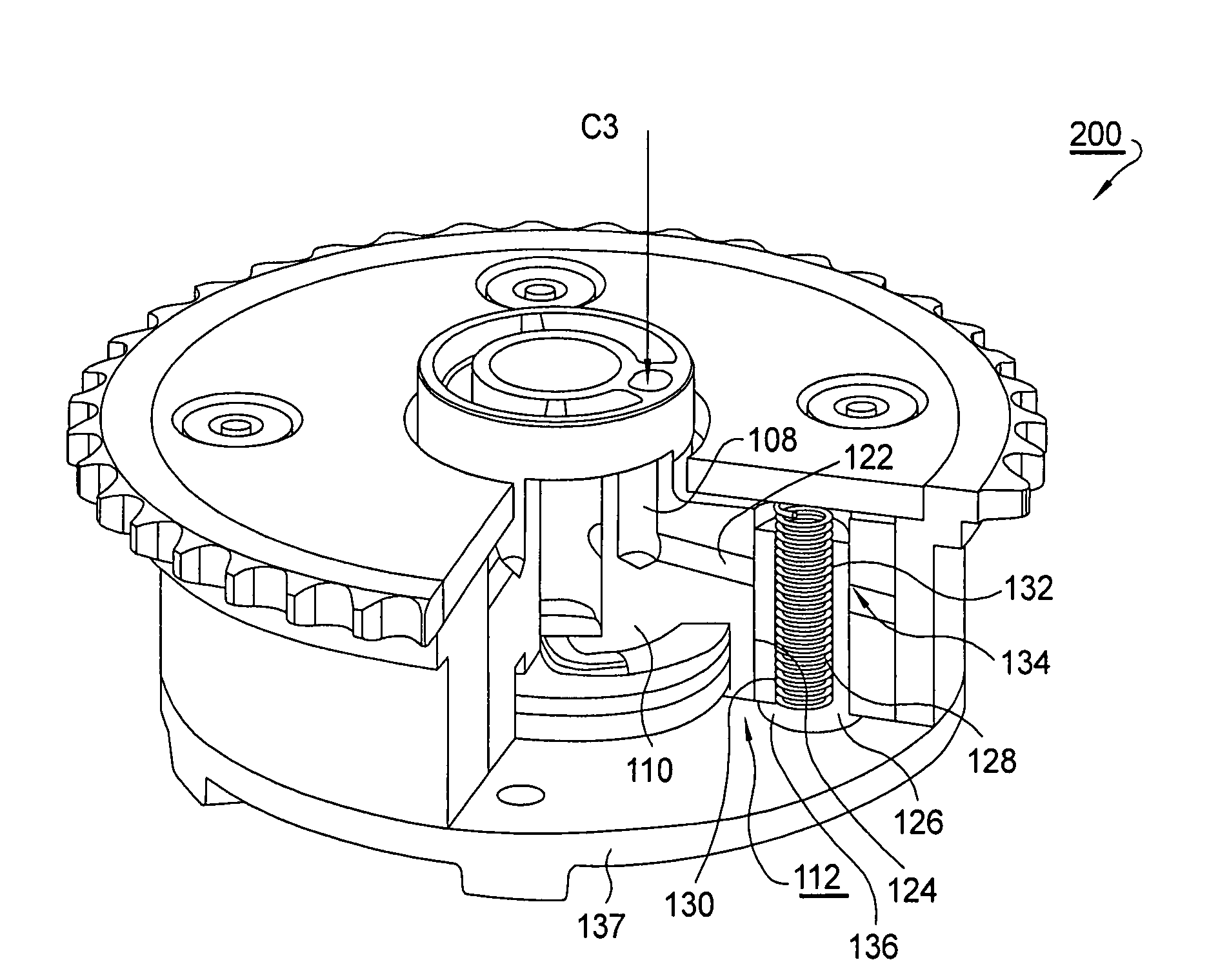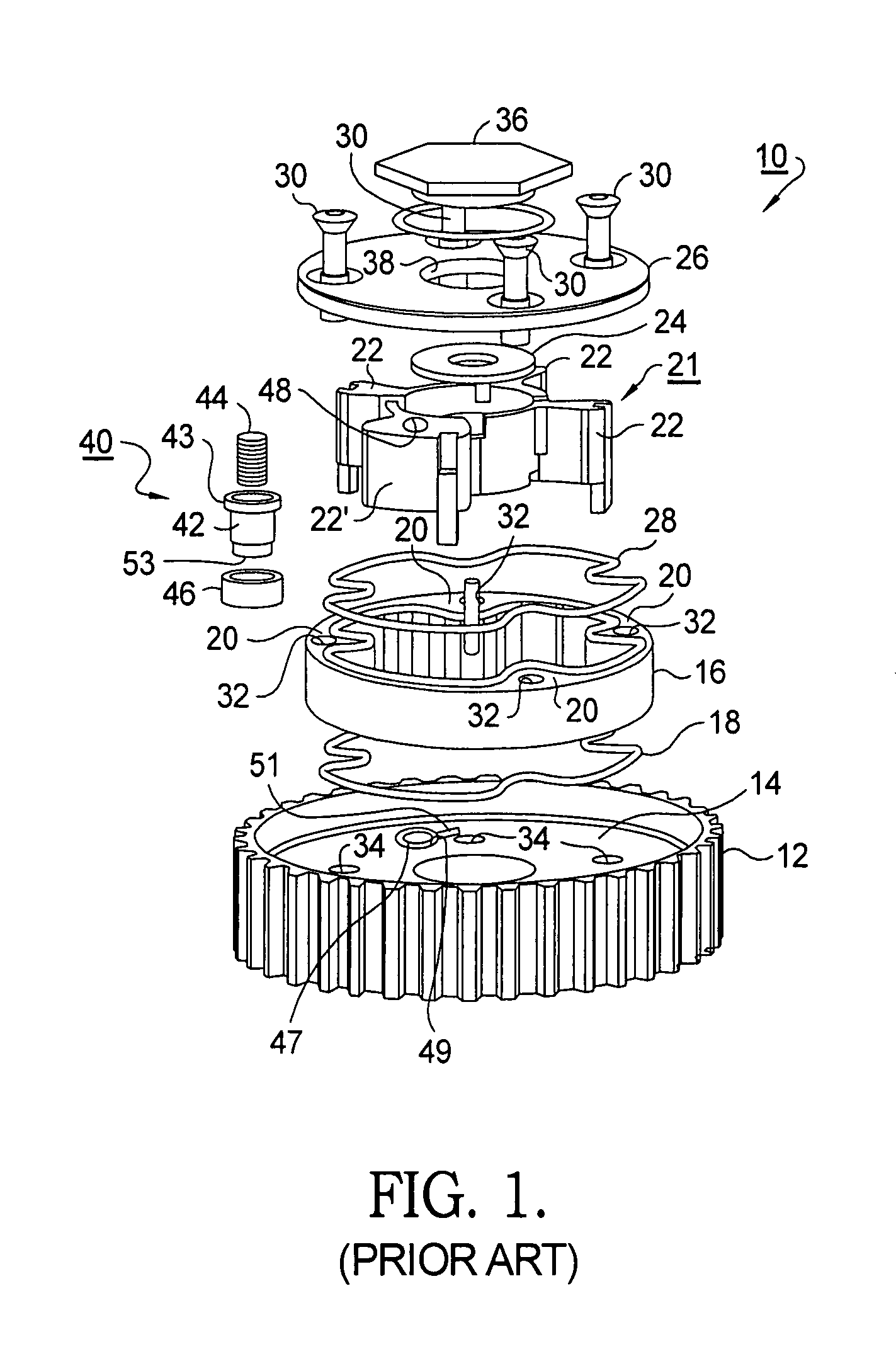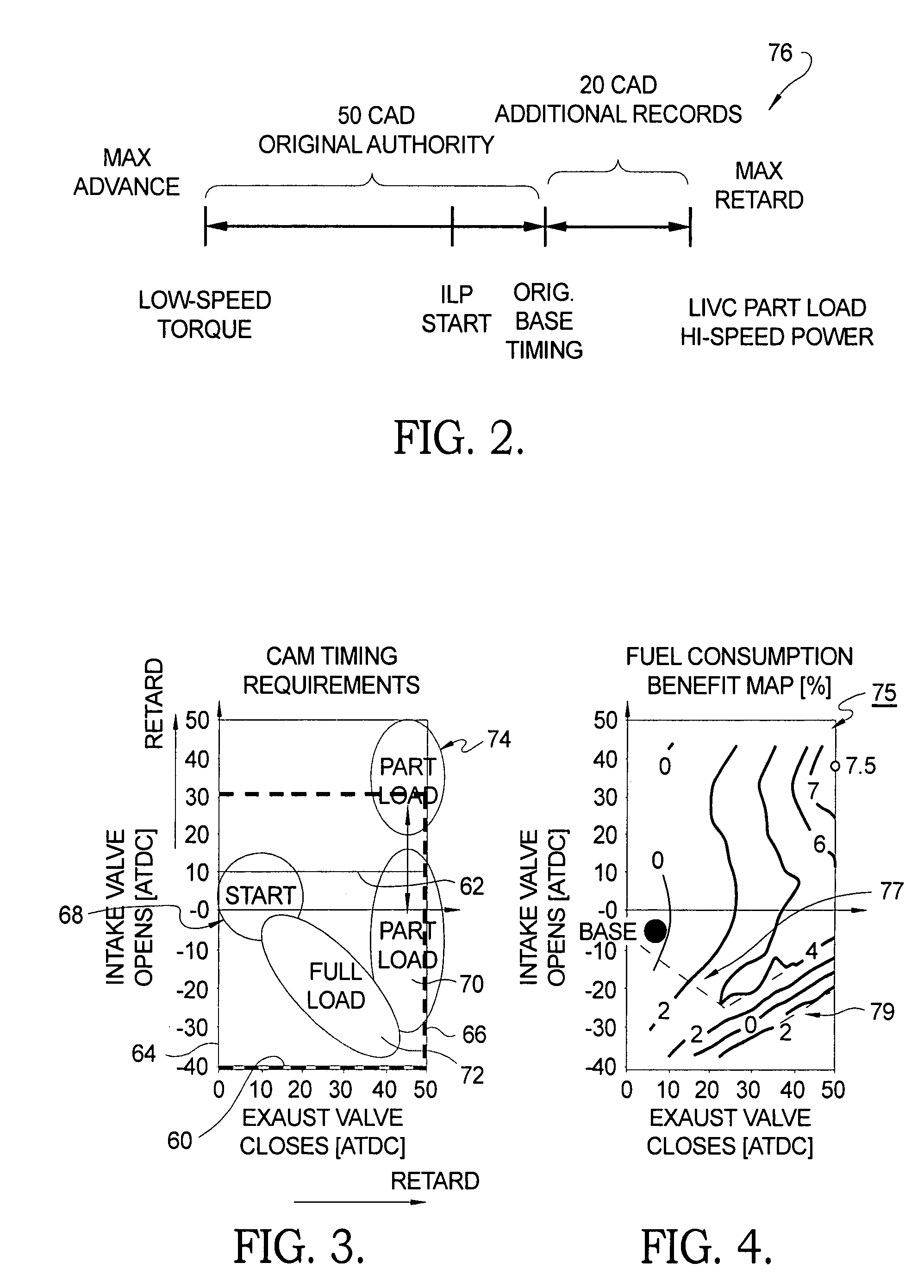Vane-type cam phaser having increased rotational authority, intermediate position locking, and dedicated oil supply
a cam phaser and cam shaft technology, applied in mechanical equipment, machine/engine, valve drives, etc., can solve the problems of unfavorable locking pin re-engagement, uncertain re-engagement of the pin end with the stator seat, and low oil pressure to reliably actuate the locking pin, so as to prevent accidental pin ejection and remove oil resistance to entry
- Summary
- Abstract
- Description
- Claims
- Application Information
AI Technical Summary
Benefits of technology
Problems solved by technology
Method used
Image
Examples
embodiment 200
[0043]Referring to FIGS. 6 through 8, in second and currently-preferred embodiment 200, longitudinal gallery 108 is radially intersected by passage 122 extending through a bore 124 in a rotor vane slidably supportive of locking pin 126 and internal return spring 128. Locking pin 126 has a first diameter over the locking portion 130 thereof, and a larger second diameter over an actuating portion 132 thereof, there being a shoulder 134 therebetween. Likewise bore 124 is shouldered to be full-fitting to both first and second pin portions 130,132. Thus, C3 oil provided via passage 122 acts upon shoulder 134 to urge pin 126 from stator seat 136, as shown in FIG. 7 (“oil pressure to unlock, spring to lock”). Locked position is shown in FIG. 8.
[0044]Note that in both improved embodiments 100,200, the phasing action of the rotor within the phaser is controlled conventionally by independent C1 and C2 oil supplies (not shown) as in prior art phaser 10. The invention is directed to providing a...
embodiment 100
[0048]For embodiment 100, the valve logic is simply reversed.
[0049]Preferably, locking pin 126 is cylindrical and seat 136 is square-sided such that there is no vector to assist in urging the pin from the seat in response to any stray pressure pulses, and further to assure that the pin remains in locked mode if only partially inserted into seat 136.
[0050]Because the motion of the lock pin in the direction opposite to C3 pressure is solely in response to compression (embodiment 200) or extension (embodiment 100) of spring 128, care should be taken to assure that rapid motion of the pin is not impeded by residual oil in seat 136 and against shoulder 134. Therefore, an active oil vent path is preferably provided.
[0051]Referring to FIGS. 9 and 11-13, a first vent passage 150 extends axially of the rotor hub in communication with first end 120 of locking pin 126. When the rotor is in position for locking engagement to stator seat 136, first passage 150 is aligned and communicates with bo...
PUM
 Login to View More
Login to View More Abstract
Description
Claims
Application Information
 Login to View More
Login to View More - R&D
- Intellectual Property
- Life Sciences
- Materials
- Tech Scout
- Unparalleled Data Quality
- Higher Quality Content
- 60% Fewer Hallucinations
Browse by: Latest US Patents, China's latest patents, Technical Efficacy Thesaurus, Application Domain, Technology Topic, Popular Technical Reports.
© 2025 PatSnap. All rights reserved.Legal|Privacy policy|Modern Slavery Act Transparency Statement|Sitemap|About US| Contact US: help@patsnap.com



